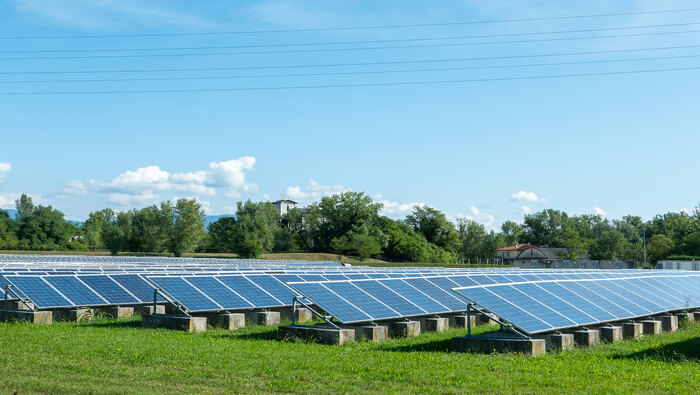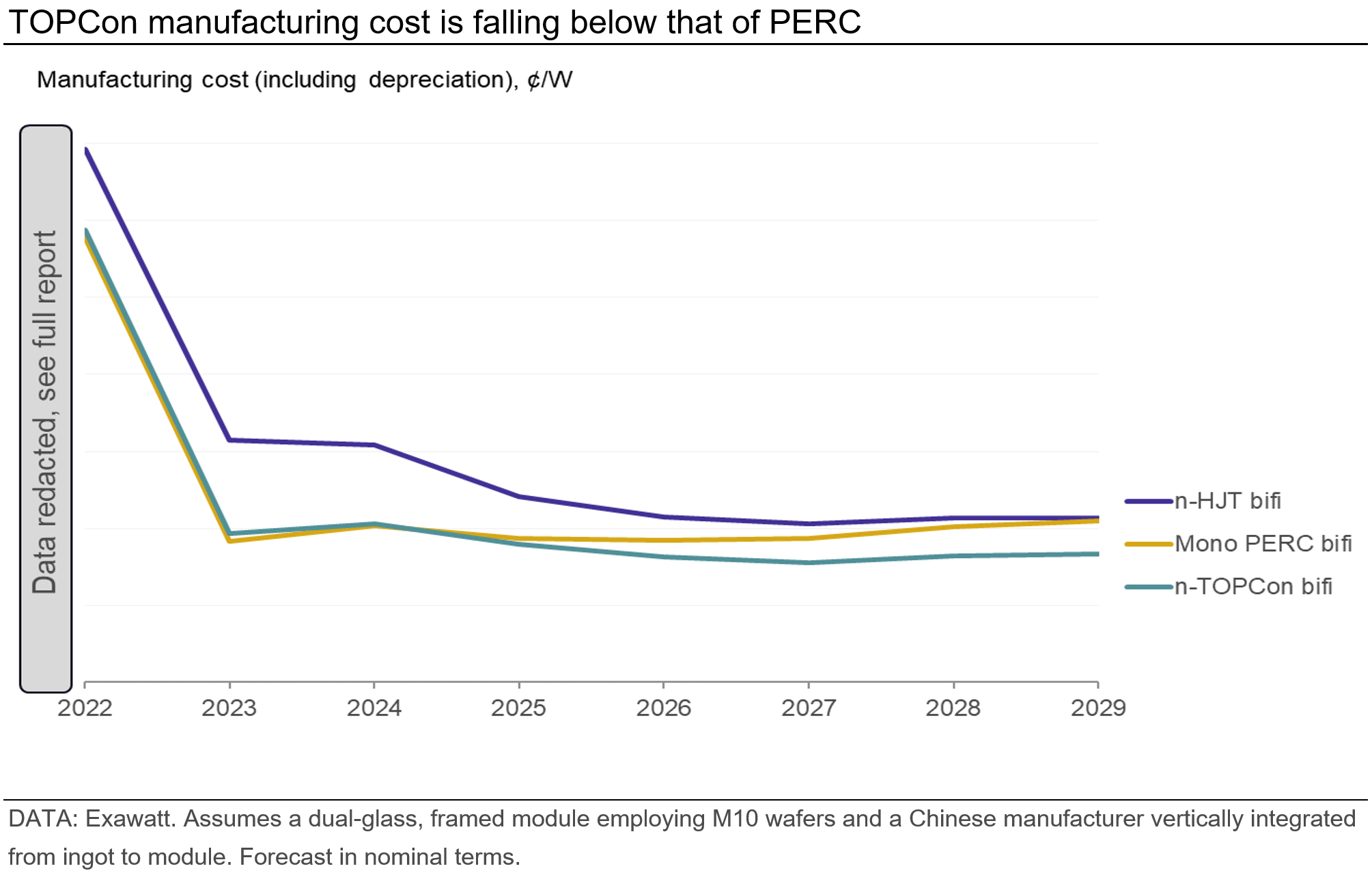Solar cell technologies are rapidly evolving as manufacturers look to drive up cell efficiencies. In 2024, TOPCon is likely to become the leading technology in terms of market share, but for how long, and what comes after?

Author Alex Barrows
Head of PV, Exawatt View profile
TOPCon: Charting a course for dominance in the coming years
For the past few years, solar cell manufacturing has been dominated by one technology – passivated emitter and rear cell (PERC). The mass production efficiencies of these cells have increased impressively, defying most expectations for both the pace and extent of their improvement.
However, PERC cell efficiencies are now reaching their limits in cost-effective mass production, and manufacturers are rapidly shifting to new technologies such as heterojunction (HJT) and tunnel oxide passivated contact (TOPCon). Both of these technologies can enable higher efficiencies, and in our previous Insight we described how future cost-per-watt reductions for PV modules would hinge on such technological advances.
The key for TOPCon, is that this higher efficiency is now coming without a meaningful increase in manufacturing cost. The cost-per-watt (including depreciation) for a leading vertically integrated manufacturer is now very similar for a TOPCon module as for a PERC module. However, the higher efficiency TOPCon module delivers extra value for the end user by lowering cost-per-watt for many system-level costs such as labour, trackers/mounting structures and land. This allows manufacturers to charge a small premium (currently ~0.5–1.0 ¢/W) thereby expanding their margins – at least until the rest of the industry catches up and TOPCon becomes the “new normal”.

What about heterojunction?
Using Exawatt’s bottom-up cost modelling approach, we can compare current and forecast manufacturing costs for large-scale production of different cell and module technologies. Our modelling suggests that heterojunction (HJT) manufacturing will remain higher cost than TOPCon, even with innovations such as silver-coated copper paste helping to bring down costs.
For HJT to achieve cost-per-watt parity with TOPCon, it is likely that HJT would need to establish a significant lead in module efficiency. While we are not currently forecasting such a lead, it is one possible scenario, and how this situation evolves will depend critically on the progress that TOPCon manufacturers make in the near future.
Theoretical maximum efficiencies for TOPCon are similar to those for HJT, but coming close to realising these limits is reliant on TOPCon manufacturers adopting localised TOPCon passivation at the front contacts of the cell. We view this as a key challenge for these manufacturers over the next one to two years; and while we believe this approach will become mainstream, this is not a given. Should this improvement turn out to be too challenging or too expensive to implement in mass production, then TOPCon’s market dominance is likely to be cut short, with manufacturers gradually migrating towards either HJT or back contact (xBC) technologies.
The future: Back contact or multi-junctions?
As discussed in our earlier Insight, the longer term outlook for PV technology is a move towards multi-junction solar cells. However, we are likely to have to wait until 2026–27 to see these devices commercialised at any scale, and we believe it is most likely to be the early 2030s before they really start to become competitive in most deployment scenarios.
The longer the time taken to commercialise multi-junction cells, the more likely it is that back contact technologies will come to dominate the PV market in the intervening years as manufacturers look for other ways to push efficiencies beyond those achievable by standard TOPCon and HJT cells.
Find out more at: Solar Technology and Cost (STAC) Service | CRU (crugroup.com)
Explore this topic with CRU
Author Alex Barrows
Head of PV, Exawatt View profile